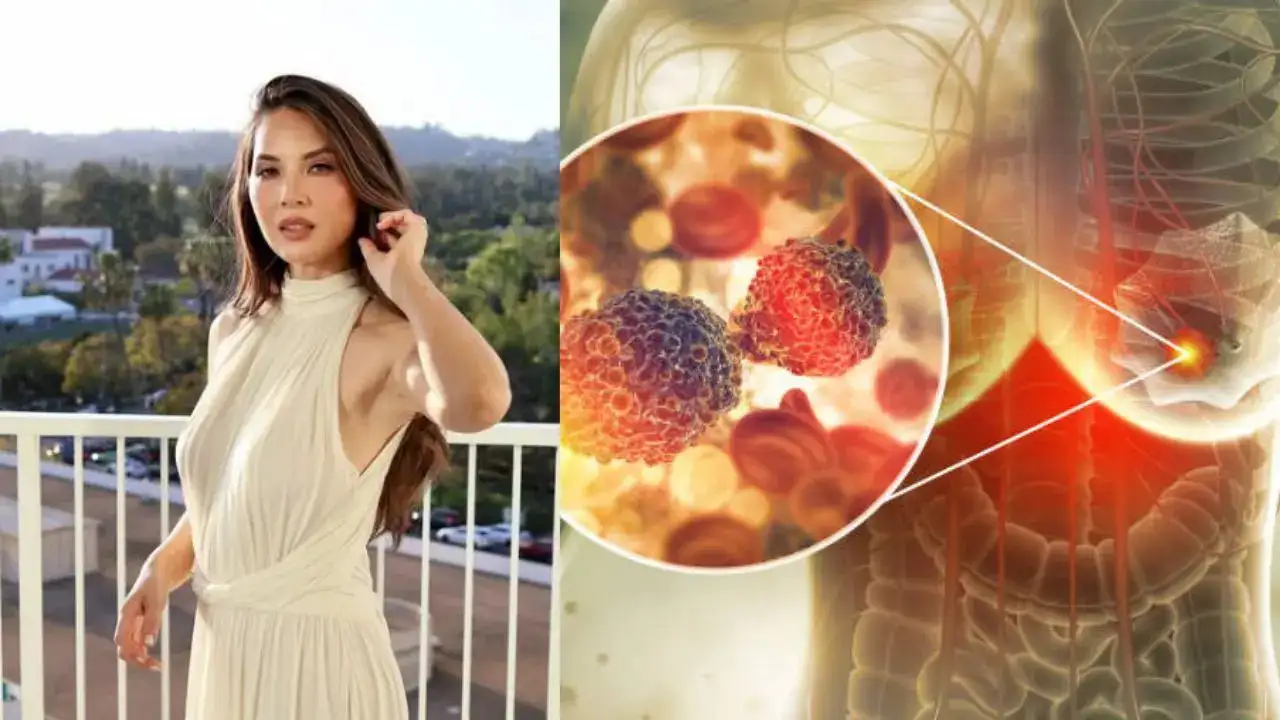
Olivia Munn underwent a breast cancer risk assessment that finally diagnosed her stage 1 aggressive breast cancer (Pic: Instagram/iStock)
Actor Olivia Munn, who was diagnosed with breast cancer at 43, has revealed her initial mammogram tests said she was in the clear but she was ultimately diagnosed with an aggressive form. Since then, Munn has undergone several surgeries, including a double mastectomy and hysterectomy, along with hormone suppression therapy.
In an Instagram post, Munn said her final diagnosis came only after her OB/GYN advised her to calculate her Breast Cancer Risk Assessment Score. “In February of 2023, in an effort to be proactive about my health, I took a genetic test that checks you for 90 different cancer genes,” she wrote in an earlier post. “I tested negative for all, including BRCA (the most well-known breast cancer gene). My sister Sara had just tested negative as well. We called each other and high-fived over the phone. That same winter I also had a normal mammogram.”
Munn added that her cancer would have gone undetected for another year when her next mammogram was scheduled, but her doctor decided to calculate her Breast Cancer Risk Assessment Score. “The fact that she did save my life,” Munn wrote, calling her doctor her “guardian angel”.
Munn's lifetime risk of 37 per cent led to an MRI, an ultrasound, and then a biopsy, which found Luminal B cancer in both breasts. According to experts, Luminal B is an aggressive, fast-moving subtype of hormone receptor-positive breast cancer, characterised by estrogen receptor positivity and potentially progesterone receptor negativity. Doctors say Luminal B cancers are more likely to recur and have a slightly worse prognosis than other types of cancers.
What is a breast cancer risk assessment score?
A breast cancer risk assessment is a tool that predicts the likelihood you may develop breast cancer at some point in your life. This tool can help your doctor determine how likely you will be among the 12 per cent, so they can monitor your breast health closely.
Doctors say it is all about probability, whether you have an above-average risk of developing breast cancer compared to others of a similar age and background.
What are the risk factors that the test assesses?
Age
The risk of breast cancer increases with age
Family history
A family history of breast cancer can increase your risk
Genetic mutations
Carrying mutated copies of the BRCA1 or BRCA2 gene increases your risk
Breast density
Women with dense breast tissue are more likely to develop breast cancer
Previous breast biopsies
Those who have had breast biopsies with abnormal results are at a greater risk.
Hormone exposure
Long-term exposure to high estrogen and progesterone levels can increase your risk.
Age when you got your period
Starting your period at a younger age exposes you to hormones for longer, increasing your breast cancer risk.
Age when your periods stopped
Experiencing menopause at an older age exposes you to hormones for longer, increasing your risk.
Childbirth
Women who have not given birth are at increased risk of developing breast cancer.
Why do mammograms miss cancer detection?
According to the American Cancer Society, regular mammograms are helpful in detecting early-stage breast cancer before you have symptoms. Breast cancer found during screening mammograms is usually smaller and has not spread outside the breast. However, the test is not perfect. Studies say screening mammograms miss about 20 per cent of breast cancers that are present during screening.
Doctors say it is not always easy to see early-stage breast cancer on a mammogram, as more than half of women have dense breasts, which means that there is fibrous and glandular tissue in relation to fatty tissue.
Dense breast tissue also shows up as white on a mammogram, making it a bit harder to detect breast cancer. Your doctor will likely recommend an ultrasound following a mammogram with unclear results.
